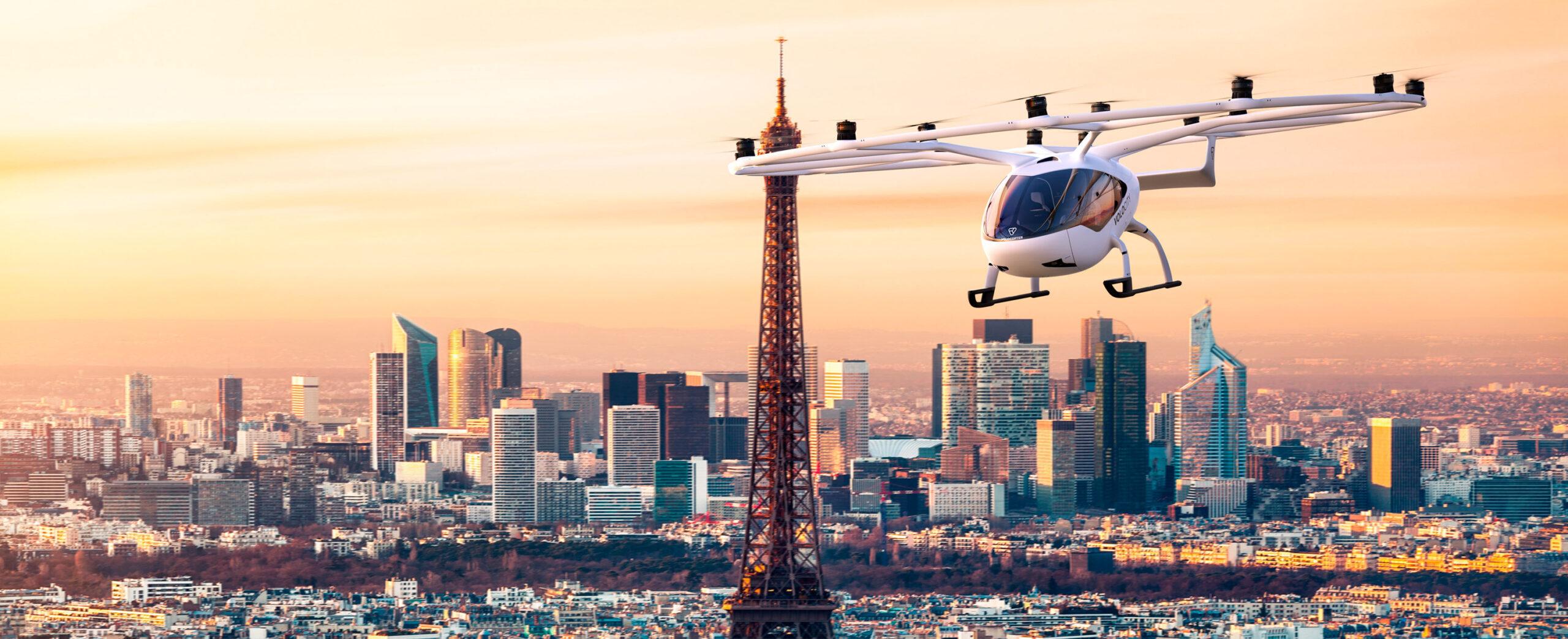
VoloCity
Germany’s Volocopter has dislodged Joby Aviation from the top slot in the latest AAM Reality Index, part of a major shakeup that reflects increased scrutiny of electric-vertical-takeoff-and-landing (eVTOL) vehicle startups across several major categories as commercialization draws nearer.
The latest version of the AAM Reality Index, compiled and published every two months by SMG Consulting, shows Volocopter ascending to the top position with a score of 8.3/10, bypassing Joby Aviation, EHang and Beta Technologies, all of which are tied for second place with scores of 8.0. Archer Aviation trails closely in third place with a 7.9 score.
The reshuffling marks the first time that Joby was not leading the AAM Reality Index since it was first launched in December 2020.
Looking beneath the headline rankings, most of the movement in the latest update came from nearly across-the-board downward revisions to many–or most–of the companies in the AAM Reality Index, with some names being hit harder than others. For example, Joby and Beta both dropped to 8.0 from 8.7 and 8.6, respectively, while Volocopter fell by less, from 8.6 to 8.3, placing it ahead of its rivals as the new top contender.
Speaking to the AAM Report, SMG Consulting founder and President Sergio Cecutta chalked up the reordering to a greater scrutiny applied to index members across three major categories: technology development, production readiness and funding.
In the case of technology development, Cecutta says he expects to see highly ranked companies undergoing flight testing with full-scale prototypes, as opposed to the subscale models some startups are using. For example, Boeing subsidiary Wisk Aero was downgraded from 7.8 to 7.4, mainly due to the company’s use of subscale prototypes.
“We used to take the view that we were happy as long as you flew something, but now it’s getting to the point where it’s very important to be able to distinguish between flying something that’s full-scale and flying something that’s subscale,” Cecutta explains.
The second category that saw a major adjustment, production readiness, was the one that Cecutta credits for dislodging Joby from the index’s top slot. Whereas SMG was previously satisfied to see companies capable of low-rate-initial production, Cecutta says he now wants to see proof that they have the ability to scale up to larger volumes.
He is also evaluating whether companies have obtained their production certificates. This is a consideration that propelled Volocopter—which already has a production certificate for its two-seater VoloCity—past Joby and Beta. Even EHang, the first company in the index to receive a type certificate for its EH216-S, still does not have a production certificate, despite the fact that it has already begun delivering aircraft to customers.
“You can get around the production certificate requirement by basically proving airworthiness of each aircraft as you go, but that only works if you’re producing in very small numbers,” Cecutta says, noting that only Volocopter and Textron subsidiary Pipistrel have obtained theirs so far.
The third major revision to SMG’s methodology involved taking an even more critical view of the funding needs that AAM companies face in bringing their products to market. The switch comes after the firm conducted a study that determined it will require between $1.5 billion to $2 billion to certify an eVTOL and launch into scaled production, representing a sum that is far beyond what most companies have raised so far.
For reference, only Joby has raised more than $2 billion to date, while just two companies–Archer and Lilium–have topped $1 billion, according to SMG’s data, although Lilium has still encountered financial difficulties as a result of high spending levels for much of the last two years.
“We’re getting more detailed about how much money these companies will actually need to reach different milestones, and that’s caused some of these seismic shifts you see in the rankings,” Cecutta says. “The idea is that maybe some of these companies have enough money to certify, but will they also have enough to scale? That’s a question that more people should be asking.”
The greater scrutiny applied to technology development, production readiness and funding exacted a mostly negative toll on the companies in the AAM Reality Index, with scores declining for 15 out of the 28 members, compared to just five that saw increases.
One of those companies that bucked the trend was Japanese startup SkyDrive, which rose from 5.9 to 6.4–the largest improvement in the latest index–in a move that Cecutta largely credited to its recent fundraising success.
“With all the funding that SkyDrive has now, they have the capability to make significantly more progress than before, and we think they can probably do a conforming aircraft at this point, and maybe even go all the way to certification,” Cecutta says.
